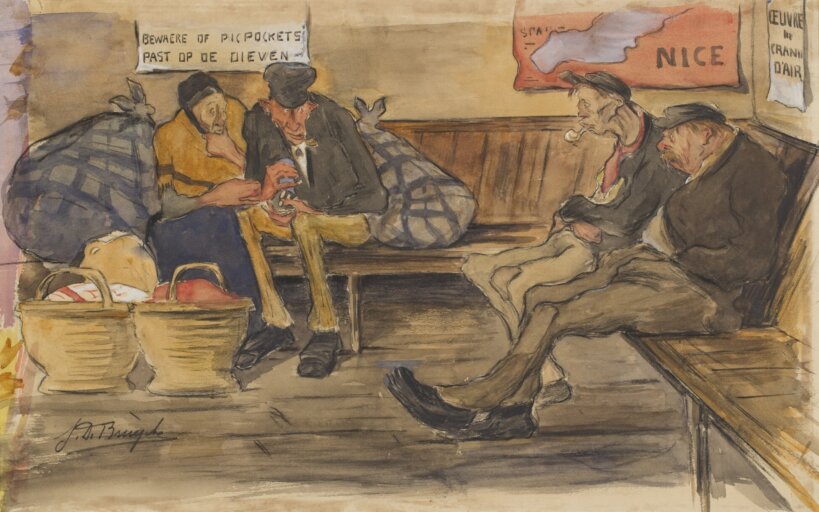In summer 2018, the Museum of Fine Arts Ghent (MSK) drew on its rich collection of drawings from its own collection. The central theme of the exhibition 'On paper' is the city of Ghent and the artists who came from, or settled in the city for short or long periods of time. For each of them, the artistic context or local life in Ghent was an inexhaustible source of drawing inspiration.
The museum brought out rarely shown gems in black-and-white and in colour, realised by both well-known and unjustly forgotten artists. The exhibition immediately marks the start of a series of handles from the MSK collection, with which we will explore lesser-known treasures from the print room in the coming years.
The baroque on paper
'On paper' showed a sampling of some 400 years of drawing. Following the focus exhibition on Gaspar de Crayer (1584-1669), which continues elsewhere in the museum, the exhibition starts with a series of rarely shown study drawings by this Baroque artist. This included some works directly related to his altarpieces that can still be found in Ghent's public collections today.
Following this, we highlighted the little-known drawn oeuvre of Jan III van Cleve (1646-1716), an artist of Dutch origin who came under the influence of De Crayer in Ghent. Van Cleve's lasting interest in his work ensured, among other things, that Baroque art lived on in Ghent until the early 18th century.
Ghent artists and city guests during the 19th century
A leap in time then leads to the late 18th and early 19th centuries, when Ghent artists such as Joseph Paelinck (1781-1839) and Josse-Sébastien Van den Abeele (1797-1855) became prominent in the development of neoclassicism.
As with so many artists of their time, an obligatory Italy trip was central to their training. The museum owns several drawn examples of their stay in Rome and the Roman campagna. This ensemble is complemented by work by prominent representatives of neo-Gothicism around the mid-19th century, with artists such as Théodore-Joseph Canneel (1817-1892) and Théophile Lybaert (1848-1927).
After 1850, several realist tendencies developed in drawing. In the MSK collection, these range from the extreme striving for verisimilitude of Gustave Vanaise (1854-1902) and Eugène Dopchie (1873-1948), over the social realism of Jules Van Biesbroeck (1873-1965), to the extraordinary, unknown sfumato self-portraits of Félix Metdepenninghen (1867-1937). Following this, the important generation of Ghent artists around 1900 comes into focus, including Albert Baertsoen (1866-1922), Jean Delvin (1853-1922) and Emile Claus (1849-1924).
Ghent players of the 20th century
The period 1885-1940 is characterised by a series of successive generations of Ghent artists with totally different personalities. The exhibition devotes a separate room to each of them.
One room highlights the drawn oeuvre of sculptor George Minne (1866-1941), who throughout his long career always approached drawing as a medium in its own right. 'On Paper' showed this evolving from his symbolist work c. 1890 to the spiritualised drawings of the 1910s-1920s.
By contrast, Jules De Bruycker (1870-1945) is pretty much the absolute opposite of the introverted Minne. He places his vernacular types in crowded market and street scenes, staging everyday life in the impoverished city after 1900. After a time absence from museum spaces, the MSK once again brought work by this much-loved Ghent artist on display.
The work on paper by Jos Verdegem (1897-1957) transports the visitor to the interwar period. The realisations of this idiosyncratic, versatile artist are immediately recognisable for their powerful and at the same time poignant representations depicting the universal conditions of being human.
Finally, following Verdegem's work, we zoom in on artists also of Ghent origin such as Gustave De Smet (1877-1943), Frits Van den Berghe (1883-1939) and Jozef Cantré (1890-1957) who gave expressionism its own voice.
